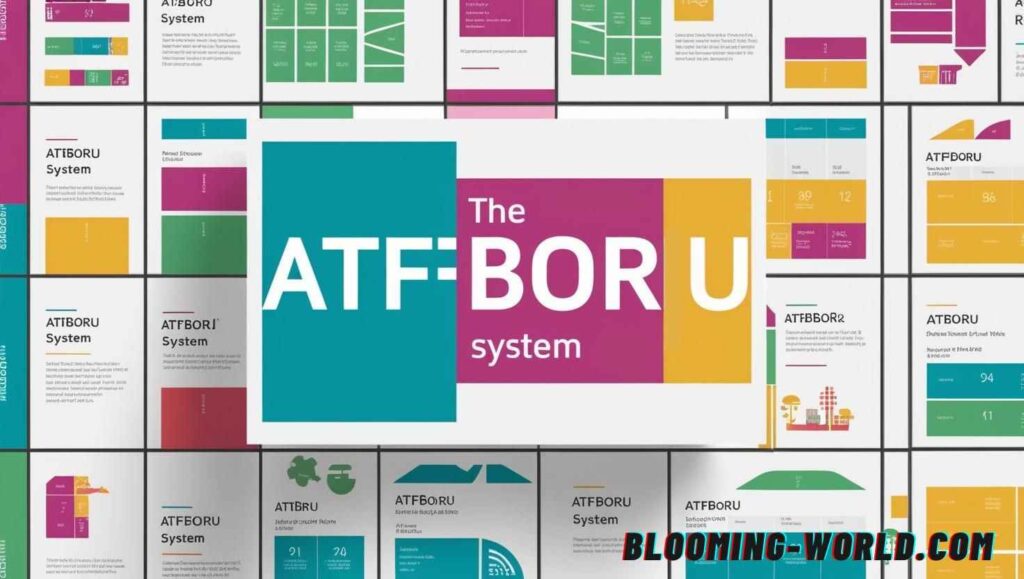- Why Traditional Growth Models Are Failing in 2025
- What Is ATFBORU?
- Why ATFBORU Is Gaining Momentum
- A – Automate Early: Build Scalable Foundations
- T – Track What Matters: Focus on Decision-Grade Metrics
- F – Focus on Friction Points: Resolve Issues Before Scaling
- B – Build Trust Loops: Make Trust Tangible
- O – Optimize With Data: Break Down Silos
- U – Unify Brand and Culture: Align Inside and Out
- Final Thoughts: Smarter Growth Demands Smarter Systems
Why Traditional Growth Models Are Failing in 2025
As digital saturation intensifies and customer expectations skyrocket, outdated business frameworks are losing relevance. Static models no longer support the velocity, agility, or personalization needed to sustain growth.
Enter ATFBORU—a dynamic and modular framework built for today’s high-stakes, fast-moving digital landscape.
What Is ATFBORU?
The Meaning Behind the Acronym
ATFBORU stands for:
- A – Automate Early
- T – Track What Matters
- F – Focus on Friction Points
- B – Build Trust Loops
- O – Optimize With Data
- R – Retain Through Personalization
- U – Unify Brand and Culture
Each element of ATFBORU redefines a core business principle, helping teams create scalable, human-centered growth systems.
Why ATFBORU Is Gaining Momentum
ATFBORU’s flexible, principle-driven structure has made it popular across industries including:
- SaaS
- eCommerce
- Fintech
- Service-based companies
From startups to scaling enterprises, organizations are turning to ATFBORU for clarity, cohesion, and actionable strategy.
A – Automate Early: Build Scalable Foundations
Why It Matters
Time is a competitive advantage. Automation removes repetitive bottlenecks and enables predictable growth—without increasing overhead.
Key Automation Areas
- Lead segmentation
- Customer onboarding
- Internal workflows
- Admin processes
Tools to Use
- Zapier, Make (Integromat) – No-code automation
- ActiveCampaign – Sales/marketing automation
- Slack Bots, Notion AI – Internal task automation
T – Track What Matters: Focus on Decision-Grade Metrics
The Problem with Vanity Metrics
Too many teams track too much—often the wrong things. ATFBORU emphasizes leading indicators that drive real outcomes.
Metrics That Matter
- Customer Acquisition Cost (CAC) by segment
- Time to First Value (TTFV)
- Product usage intensity
- Churn signals and triggers
Recommended Tools
- Mixpanel, Heap, Amplitude – Behavioral analytics platforms
F – Focus on Friction Points: Resolve Issues Before Scaling
Hidden Growth Killers
Every form field that causes drop-off or unclear message that confuses a visitor is lost revenue.
How to Identify Friction
- Funnel analysis
- Support ticket trends
- NPS & customer surveys
- Customer journey mapping
Common Friction Sources
- Poor mobile UX
- Confusing pricing
- Mismatched messaging
- Slow or unhelpful support
B – Build Trust Loops: Make Trust Tangible
Why Trust Is a Growth Driver
Trust increases referrals, reduces churn, and improves LTV. It’s no longer optional.
What Trust Loops Look Like
- Public customer feedback mechanisms
- Clear refund and return policies
- Humanized onboarding/support
- Consistent, values-driven brand voice
O – Optimize With Data: Break Down Silos
Unified Data = Unified Growth
Siloed decision-making limits growth. Cross-functional data and experimentation unlock scalable optimization.
How to Do It
- Use shared dashboards
- Run A/B and multivariate tests
- Align product, marketing, and sales KPIs
Platforms That Help
- Segment, RudderStack – Customer data platforms
- Optimizely, VWO – Testing and optimization
- Looker, Tableau – Unified data visualization
R – Retain Through Personalization: Make Retention Your Growth Engine
Why It Matters
Acquiring customers is expensive. Keeping them is efficient. Personalization boosts LTV and brand affinity.
Smart Personalization Tactics
- Adaptive in-app experiences
- Behavior-based email flows
- Contextual product education
- Targeted re-engagement campaigns
U – Unify Brand and Culture: Align Inside and Out
Culture and Brand Are Interconnected
Your team’s belief in the mission directly affects how customers experience the brand.
Questions to Ask
- Do employees know the brand promise?
- Are internal values reflected externally?
- Can customers “feel” your culture through product or service?
Key Pros and Cons of ATFBORU
| Strategic Advantage | Potential Limitation |
| ✅ Automation-first design enables predictable scaling and operational efficiency | ❌ Initial implementation complexity may slow down early adoption |
| ✅ Customer-centric personalization increases retention and deepens brand engagement | ❌ Requires mature data ecosystems and behavioral analytics to function effectively |
| ✅ Real-time performance tracking improves proactive decision-making and reduces guesswork | ❌ Can create data paralysis if not paired with clear strategic goals |
| ✅ Trust-building systems cultivate emotional loyalty and lower churn | ❌ Trust takes time to establish, delaying short-term growth outcomes |
Implementation Checklist
| ATFBORU Element | Action Step |
| Automate Early | Identify 5 workflows to automate |
| Track What Matters | Replace vanity metrics with 3 core KPIs |
| Focus on Friction Points | Run funnel analysis and heatmap review |
| Build Trust Loops | Launch transparent onboarding and support updates |
| Optimize With Data | Run an A/B test tied to revenue or retention |
| Retain Through Personalization | Launch behavioral lifecycle campaigns |
| Unify Brand and Culture | Conduct internal values vs. messaging audit |
Final Thoughts: Smarter Growth Demands Smarter Systems
In 2025 and beyond, growth will favor those who act with clarity, intention, and speed. ATFBORU provides not just a process—but a philosophy for resilient, people-centric, and data-driven growth.
Whether you’re building a lean startup or transforming an enterprise, ATFBORU equips you to scale with precision, purpose, and trust.
Disclaimer: This article introduces the ATFBORU framework as a strategic model for modern business growth. It is intended for informational and educational purposes only. Implementation results may vary based on industry, organization size, and existing infrastructure. This content should not be interpreted as professional consulting or financial advice.



